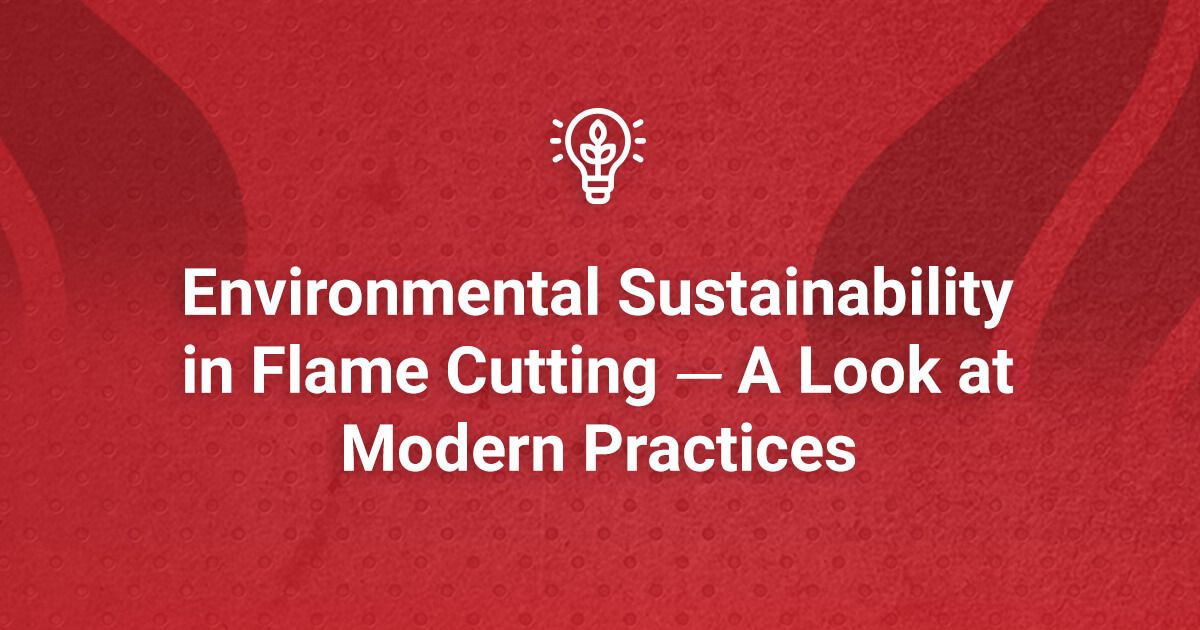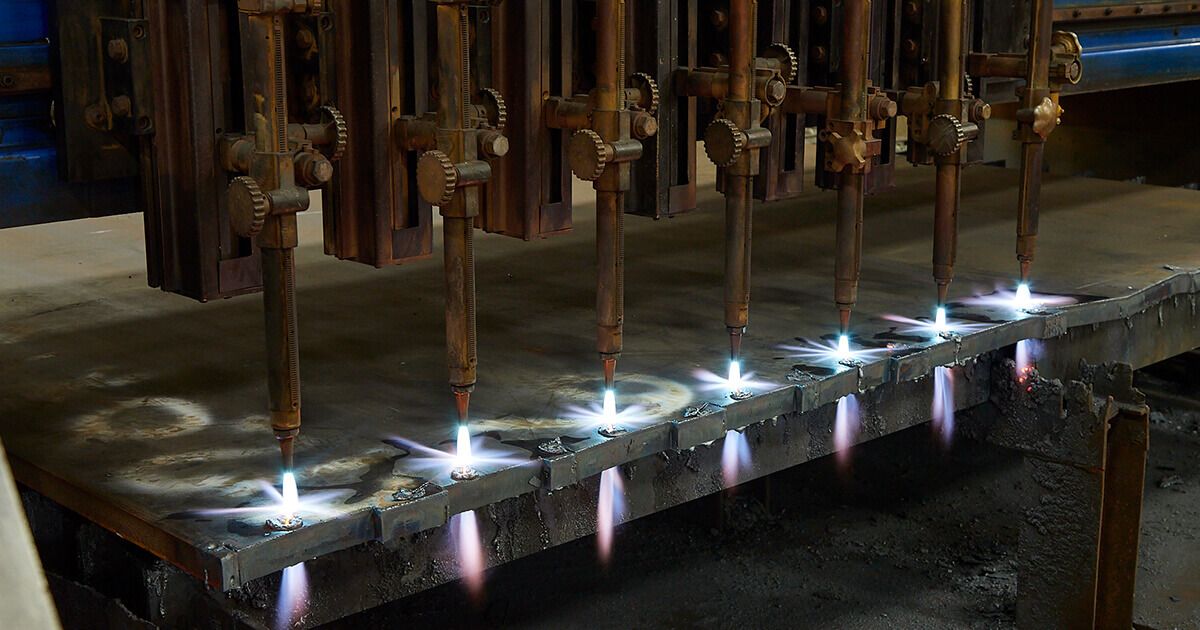
We collect basic website visitor information on this website and store it in cookies. We also utilize Google Analytics to track page view information to assist us in improving our website.
If you’re passionate about metal cutting or just keen to learn more, you’ve landed in the right place.
For over 38 years, Amber Steel has been at the forefront of metal cutting services, specializing in laser cutting, flame cutting, and plasma cutting. Our expertise has carved a niche in this cutting-edge industry, delivering precision and excellence across industrial projects big and small.
In our blog, we’ll share a mix of useful tips, innovative applications, our thoughts on sustainability in steel cutting, and more. Expect stories from the cutting floor, insights into how our processes can streamline projects across industries, and a few lessons we’ve learned along the way.
While we keep some of our trade secrets under wraps, this blog is designed to offer valuable nuggets of wisdom that you simply won't find anywhere else. Whether you’re a professional in the industry or someone fascinated by the possibilities of metal cutting, you'll find something of value here.
So, stick with us as we delve into the finer points of metal work. We’re glad to share our insights and lead discussions that matter to our industry.
How precision metal cutting propels the aerospace industry, from constructing lighter frames to enhancing aerodynamics.
The role of advanced metal cutting in automotive manufacturing, driving innovations in vehicle design and efficiency.
All about the robust and versatile process of flame cutting, ideal for tackling thicker metals with precision and ease.
Discover the art of crafting metal furniture, where cutting techniques meet design to create both functional and aesthetic pieces.
A behind-the-scenes look at the mechanics of metal cutting technologies and the science that makes them tick.
Laser cutting is where extreme precision meets efficiency, allowing for intricate designs and clean finishes.
The critical role of precise steel cutting in developing reliable and intricate medical devices.
How steel cutting supports the oil and gas industry with components that withstand extreme environments and pressures.
Known for its speed and versatility, plasma cutting slices through conductive metals with hot plasma.
Safety first! Tips and insights on maintaining a safe environment while handling powerful metal cutting equipment.
The backbone of construction, where steel fabrication and cutting technologies create frameworks that shape skylines.
Sustainability
A look at sustainability in metal cutting, focusing on practices that reduce waste and conserve energy to protect our planet.

In 2023 alone, human activity caused a projected total of 36.8 billion metric tons of CO2 emissions due to fossil fuels.
The continuous growth of the world’s shared carbon footprint can be pegged to global population growth, a surge in energy demand, and skyrocketing demand/production of goods.
Meeting these demands requires massive amounts of fossil fuel combustion. In fact, these factors have driven a 50% annual increase in greenhouse gas emissions over the past 30 years.
Furthermore, deforestation costs the world ten million hectares of forest annually—also not a positive sign for the future.
The stark reality is that our planet teeters on the edge of a 'danger zone,' detrimental to both humans and ecosystems. We have already surpassed 7/8ths of the scientific safety limits and are now in the final, critical stage. The time to act is now.
We’ve started with these general environmental statistics to illustrate a point:
Embracing improved sustainability practices and environmental preservation is not just about our products, services, brands, and bottom line. It's about shaping humanity's long-term future and determining where the world will be centuries, if not a millennium, from now. We, the industry leaders in steel fabrication and welding, have the power to make a positive change.
That said, how do flame cutting and steel fabrication fit into sustainability?
Steel production produces around 7% of the world’s carbon dioxide. It's involved in a broader industrial sector that was responsible for 30% of the US’s greenhouse emissions in 2021.
Manufacturing steel generates 1.83 tons of CO2 for each ton of steel made. Each year, steel production adds 3.3 million tons of global emissions.
Unfortunately, steel manufacturing must always put some strain on the environment. Metals are robust materials that demand equally robust manufacturing, cutting, and fabrication processes. It takes a lot of energy and expands carbon footprints.
Still, the pros of metals like steel vastly outweigh the cons.
Civilizations as we know them would cease to exist without metals and the various processes involved in making and shaping them.
We need steel for our buildings and aluminum for our cars. Modern aircraft require titanium, while electronics need copper.
In other words, metals are here to say. They’re the literal backbone of our society and many of its infrastructures.
It’s up to those in adjacent industries and disciplines, from flame cutters to welders, to keep honing their sustainability approaches and innovating ways to offset waste and carbon emissions as much as possible.
It’s about striking a balance—combining function and efficiency with a firm eye on enhanced sustainability.
Sustainability isn’t a reactive process. It’s proactive.
Given the significant carbon and greenhouse emissions from steel manufacturing, businesses like ours can’t sit back and hope we’re practicing sustainability.
With sustainability comes a pressing need to “get after it” and always sniff opportunities out. In flame-cutting, for instance, you must take every conceivable measure to limit the process's environmental damage.
Sure, ‘limiting the damage’ doesn’t sound as emphatic as eliminating it altogether but consider the difference mitigating measures can make. If you cut down your emissions, and then your peers do the same, and their peers follow suit, the chain reaction could create a healthier world where everyone can live happily, and businesses can thrive freely.
Let’s explore how we practice environmental sustainability with our flame cutting at Amber Steel.
We at Amber Steel view ourselves as expert flame cutters and tree huggers.
In all seriousness, sustainability has become an important part of how we do business, and related practices are prominently featured throughout our operations. Our approach to flame cutting is no different.
On average, a steel production plant produces 0.6 tons of waste for every ton of steel.
As we speak, human-generated waste accumulates in frighteningly enormous amounts worldwide, negatively impacting multiple ecosystems.
It’s our responsibility to uphold a standard and exude leadership in sustainability initiatives like limiting waste.
Through responsible resource management that doesn’t allow for waste, we ensure every piece possible is maximized and utilized during the flame-cutting process.
The above is a shining example of us proactively meeting sustainability head-on.
Rather than tossing away components we don’t have an immediate use for, we consciously and purposefully seek ways to repurpose our materials. We’ll find somewhere for these materials to end up in a different project, adding further value to our clients, business, and the environment.
Think of all the mechanical components of flame cutting. Assess from all angles where you can be sustainable. What areas of the flame-cutting process are open to alterations or adjustments that can enhance sustainability?
First and foremost, ask yourself how a flame cutter operates: With a type of fuel gas, whether propane, acetylene, or natural gas.
Natural gas is considered a relatively clean burning fossil fuel compared to burning coal. Others point out that propane is better for the environment than natural gas.
There will not be one correct answer here—you have a business model to prioritize. Budgets are also a factor. The scope of your projects might not allow you to choose an alternative fuel gas.
Using alternative fuels to acetylene to reduce the environmental impacts of flame-cutting isn’t a straightforward proposition. You’ll have to learn new techniques and perhaps invest in new machinery to be compatible with alternative, greener choices.
We must broach these topics when seeking sustainability in fire cutting, even as they may challenge our conventions and preconceived notions about the industry.

Metals often have coatings before they undergo flame cutting. These coatings can be oil, paint, or various other chemicals. Such substances prevent corrosion or rust in the base material once exposed to moisture or the atmosphere during cutting or fabrication.
Stripping these coatings before flame-cutting (or welding) will prevent them from atomizing and becoming harmful fumes that pollute the air.
These fumes contain heavy metals and toxic pollutants that can severely and adversely impact the environment.
We suggest removing these coatings with specialized solvents that create chemical reactions and leave non-threatening chemicals behind.
It is crucial to note that our repurposing and waste-reduction methods aren’t ad hoc at Amber Steel.
Yes, our general attitudes and mindset revolve around sustainability, whether planning or executing a flame-cutting project. So, we might seem like we can be sustainable on the spot, improvising without a defined systemic approach.
However, our sustainability-first attitude at Amber exists because we’ve deeply ingrained it into our systems and mechanical operations via technological advancements and investments.
Undoubtedly, our technology makes us more efficient in terms of our bottom line. Because of tech tools, we’re far more profitable as a company.
As we know, though, sustainability is about more than turning a profit. Fortunately, our technology is also about more than turning a profit. Our innovative tools streamline all facets of our business, enabling us to maximize large material usage while mitigating waste.
Technology and automation will be integral to sustainability moving forward.
Economic demands will pull metal fabrication industry leaders in many directions, making it more challenging to focus on sustainability initiatives. Making time for green-friendly practices is impossible when your schedule won’t allow it.
Automation technologies that remove time-sapping repetitive tasks and help orchestrate efficient workflows allow crucial decision-makers to focus on sustainability. With the optimal tech stack, you’ll never lose sight of what matters most: the environment.
Flame cutters are machines that require gas fuel to run and—much like a car—will dwindle in efficiency over time.
Of course, you don’t want to cycle through a steady array of flame-cutting machines. However, you don’t want an inefficient cutter past its sell-by date and guzzling gas.
The better you treat your machinery, the longer it’ll last, and the more efficiently it’ll burn through its fuel, proving better for the environment.
Many detractors will claim that working towards sustainability will not improve their bottom line, so why dedicate time and resources to it?
To the above argument, we offer some food for thought—65% of survey respondents claim they want to purchase from brands that advocate sustainability.
Society is becoming more sustainability-centric, and people are looking to businesses and industries to lead the charge. Consumers want to associate with brands that put the environment first, including steel manufacturing and fabrication companies.
Furthermore, failing to do our part in protecting the environment means there won’t be an environment fit for our bottom line. We need to sustain what we have, so it remains here for our grandchildren’s children to run their steel manufacturing juggernaut enterprises.
Do you want to discuss further sustainability practices in flame, laser, or plasma cutting? Do you have changes in mind that can positively affect metal manufacturing’s impact on the environment? If so, contact Amber Steel today—we look forward to hearing your insightful questions or game-changing ideas!